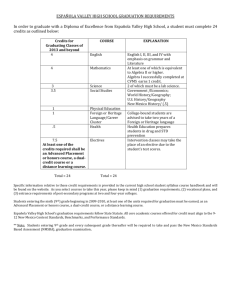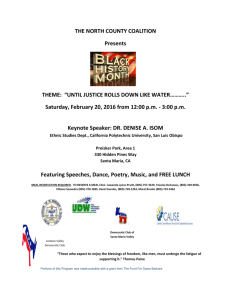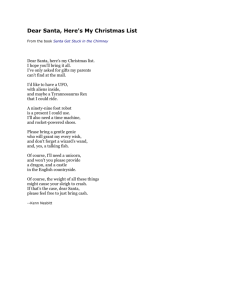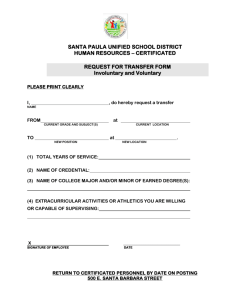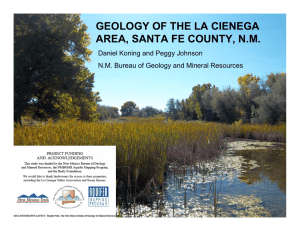8 Annual Española Workshop: The link between science and water policy:
advertisement
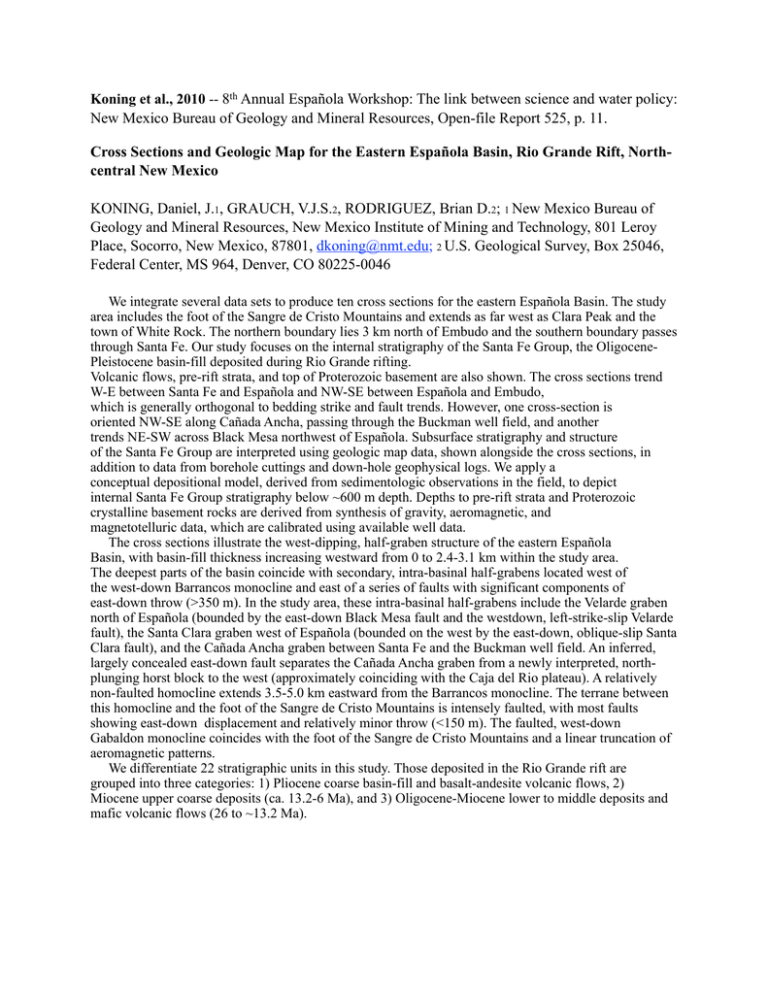
Koning et al., 2010 -- 8th Annual Española Workshop: The link between science and water policy: New Mexico Bureau of Geology and Mineral Resources, Open-file Report 525, p. 11. Cross Sections and Geologic Map for the Eastern Española Basin, Rio Grande Rift, Northcentral New Mexico KONING, Daniel, J.1, GRAUCH, V.J.S.2, RODRIGUEZ, Brian D.2; 1 New Mexico Bureau of Geology and Mineral Resources, New Mexico Institute of Mining and Technology, 801 Leroy Place, Socorro, New Mexico, 87801, dkoning@nmt.edu; 2 U.S. Geological Survey, Box 25046, Federal Center, MS 964, Denver, CO 80225-0046 We integrate several data sets to produce ten cross sections for the eastern Española Basin. The study area includes the foot of the Sangre de Cristo Mountains and extends as far west as Clara Peak and the town of White Rock. The northern boundary lies 3 km north of Embudo and the southern boundary passes through Santa Fe. Our study focuses on the internal stratigraphy of the Santa Fe Group, the OligocenePleistocene basin-fill deposited during Rio Grande rifting. Volcanic flows, pre-rift strata, and top of Proterozoic basement are also shown. The cross sections trend W-E between Santa Fe and Española and NW-SE between Española and Embudo, which is generally orthogonal to bedding strike and fault trends. However, one cross-section is oriented NW-SE along Cañada Ancha, passing through the Buckman well field, and another trends NE-SW across Black Mesa northwest of Española. Subsurface stratigraphy and structure of the Santa Fe Group are interpreted using geologic map data, shown alongside the cross sections, in addition to data from borehole cuttings and down-hole geophysical logs. We apply a conceptual depositional model, derived from sedimentologic observations in the field, to depict internal Santa Fe Group stratigraphy below ~600 m depth. Depths to pre-rift strata and Proterozoic crystalline basement rocks are derived from synthesis of gravity, aeromagnetic, and magnetotelluric data, which are calibrated using available well data. The cross sections illustrate the west-dipping, half-graben structure of the eastern Española Basin, with basin-fill thickness increasing westward from 0 to 2.4-3.1 km within the study area. The deepest parts of the basin coincide with secondary, intra-basinal half-grabens located west of the west-down Barrancos monocline and east of a series of faults with significant components of east-down throw (>350 m). In the study area, these intra-basinal half-grabens include the Velarde graben north of Española (bounded by the east-down Black Mesa fault and the westdown, left-strike-slip Velarde fault), the Santa Clara graben west of Española (bounded on the west by the east-down, oblique-slip Santa Clara fault), and the Cañada Ancha graben between Santa Fe and the Buckman well field. An inferred, largely concealed east-down fault separates the Cañada Ancha graben from a newly interpreted, northplunging horst block to the west (approximately coinciding with the Caja del Rio plateau). A relatively non-faulted homocline extends 3.5-5.0 km eastward from the Barrancos monocline. The terrane between this homocline and the foot of the Sangre de Cristo Mountains is intensely faulted, with most faults showing east-down displacement and relatively minor throw (<150 m). The faulted, west-down Gabaldon monocline coincides with the foot of the Sangre de Cristo Mountains and a linear truncation of aeromagnetic patterns. We differentiate 22 stratigraphic units in this study. Those deposited in the Rio Grande rift are grouped into three categories: 1) Pliocene coarse basin-fill and basalt-andesite volcanic flows, 2) Miocene upper coarse deposits (ca. 13.2-6 Ma), and 3) Oligocene-Miocene lower to middle deposits and mafic volcanic flows (26 to ~13.2 Ma).


